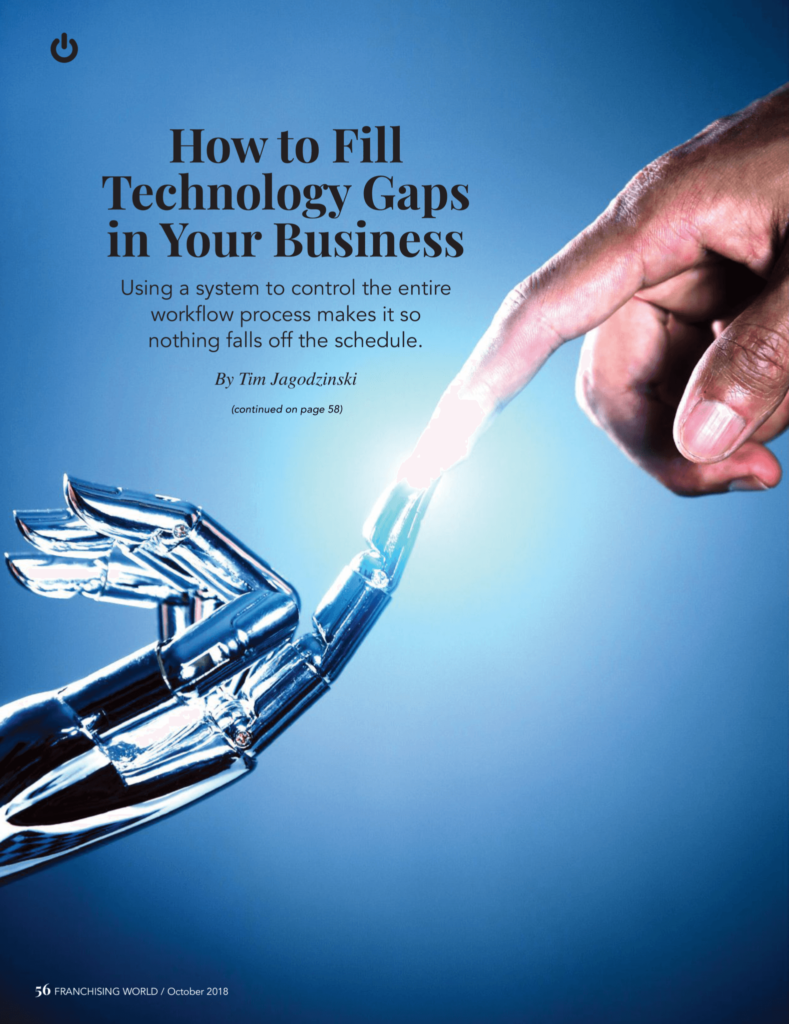
What are technology gaps? HR sends an email to a new hire Gmail account who’s not yet on-board. In the email are attachments that need to be completed, signed and returned before his first day of work. The email goes to the new hire’s spam folder, that’s a technology gap.
A technology gap is where your manual business processes and loosely coupled technology creates a gap between work steps. Work that needs to get done doesn’t get done. In-between all of the steps, where one task ends and another starts is where can get lost.
These technology gaps exist because there is no one system managing all the work steps in a process. One step could be a manual step, another step may use email, another step could use Salesforce, another step uses a spreadsheet, and another uses PDF forms.
Manual inefficiencies happen when you have too many manual steps with different technologies or no technologies, for example, you are emailed a PDF form to fill out, sign and return. You have to fill it out, print it, manually sign it, scan it in and then email it back. Technology inefficiencies happen when too much technology or too difficult to use technology to accomplish a simple task.
Technology gaps go unnoticed because there is no system making sure work gets done. Using a system like Identifi to control the entire process makes it possible, so nothing falls into technology gaps.
With a system managing all the steps, all work gets completed, gaps cease to exist. It’s a good feeling when you know customers, prospects, vendors, and employees won’t be upset because something vital to them didn’t get done. Then you think about it, and wonder are all the steps getting done efficiently? Do you have manual inefficiencies or technology inefficiencies getting in your way? Since the system gathers data and provides reports online for every step in the process, we have information that can tell us which steps have inefficiencies. The data will tell us which work steps in the process are slowing down sales, customers, employees or vendors. We will have information to compare employee performances to others to identify those who need more training or recognize which steps have too high of a learning curve.
Using the strengths of the system and the strengths of the people together create the most accurate and efficient processes.
1. People are better at solving problems where rules don’t exist, and systems are better where rules are defined. Your process is a known set of business rules, and the system is better at managing the entire process. Each step in the process represents different work to be performed; some work steps are clearly defined, like ordering a background check and making sure it gets done, and the system can achieve this better. Other steps like collaborating with a customer on design are better if done by a person.
2. People are better at dealing with unexpected results, where systems are better when results are predictable. A customer service person is better at dealing with a customer when the customer's three-year-old child has a meltdown. Systems are better at dealing with items that have a defined timeframe to be finished and what to do when it does not get done.
3. People are better at tasks in 3-D, like cooking, cleaning, and driving, all lower-skilled jobs. People are also better at complex mental jobs, highly skilled jobs, like surgery. Today you may question if a person is better at driving than a system. In the definition of better, if we include costs, then people are better at 3-D lower skilled jobs. Sure a system may soon be able to drive better, however at what cost. Vast amounts of money have already gone to driverless research and development, and a lot more money will be needed before we have systems capable of doing all the driving. It is not possible for most companies today to spend the research and development necessary to replace all 3-D low skilled jobs. Despite what we read, artificial intelligence is not going to replace all jobs anytime soon.
4. People are better at being Human, showing empathy, creativity, making people laugh, the human touch is essential and at least for some time will not be duplicated.
Benetrends Financial implemented Identifi’s Business Process Automation and Document Imaging system for their new client onboarding. They were able to eliminate the emailing of PDF forms, clients filling out PDF's, manually signing documents and returning them via scanning or the post office. With Business Process Automation they were able to convert all the forms to online web forms, add online electronic signatures, integrate their CRM data to the Business Process Automation and allow the client to do everything on a smartphone, tablet or PC while gathering data on the overall process performance.
Tim Jagodzinski is the VP of Business Development at Identifi with 28 years working with Business Process Automation and Document Imaging. tjagodzinski@identifi.net